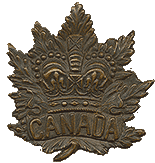Battles
Doornkop
28-29 May 1900
In late May 1900, the British army was nearing the gold-mining centre of Johannesburg. Across the army's route lay the formidable Klipriversberg Range. In its midst was the position of Doornkop, which the Boers had occupied in force. The British ran up against the Klip River, which lay about four kilometers to the south of Doornkop on 28 May. In preparation for a direct assault, the commander of the cavalry division gave the task of crossing the river and gaining a foothold on the other side to the 1st Mounted Infantry Brigade, which included the Royal Canadian Dragoons and the Canadian Mounted Rifles. Once across, the force fanned out, but then spent a long, unpleasant day and night under Boer fire, in temperatures that fell below freezing after dark.
In the meantime, the British commander-in-chief, Lord Roberts, came to appreciate that there was an alternative to the frontal attack that the Boers anticipated. Instead, he would seize a crossing further down-river to the west and, from there, turn the Boer position from the flank. Units of cavalry began to withdraw from the first position and move to the west on the 29th. The two Canadian units remained temporarily behind to draw Boer fire and deflect the enemy's attention from the flanking manoeuvre taking place south of the river. After enduring about three hours of heavy Boer fire, the Canadian Mounted Rifles finally galloped back across the river, followed soon thereafter by the Dragoons. The two units had played a vital part in the battle, and suffered only light casualties.
The cavalry succeeded in seizing a new crossing of the river to the west, but it was still be up to the infantry, including the 2nd Battalion, Royal Canadian Regiment of Infantry, to advance and attack Doornkop (See map). As part of the general attack, the Canadian infantry moved forward over a low ridge and up a long slope under fire the whole way. The Boers had set fire to the brush and for part of the distance the troops had to run through flames, while the smoke made navigation and control difficult. By clever use of the ground, aided by the aggressive support of the battalion machine gun section, the Canadians captured their objective with losses of only seven men wounded. The bulk of the fighting in taking Doornkop had been undertaken by a British unit, the Gordon Highlanders, which sustained heavy casualties.
The action at Doornkop was the only time during the war that units of Canada's first and second contingents fought together. Their success indicates the high level of efficiency the units had reached by this stage of the war.
